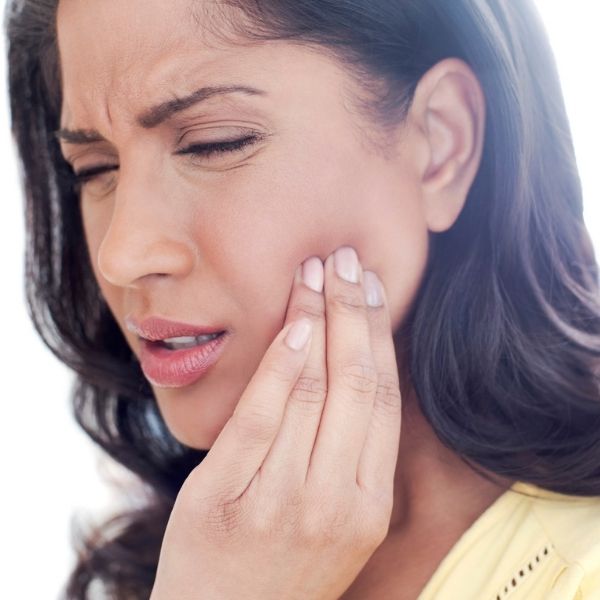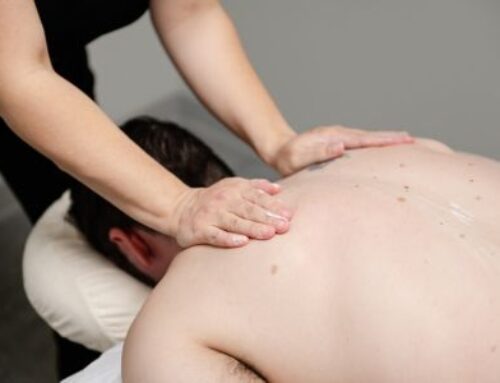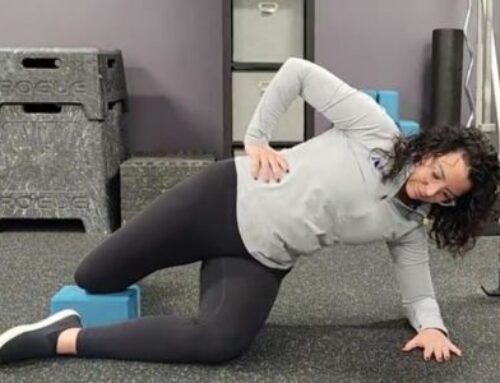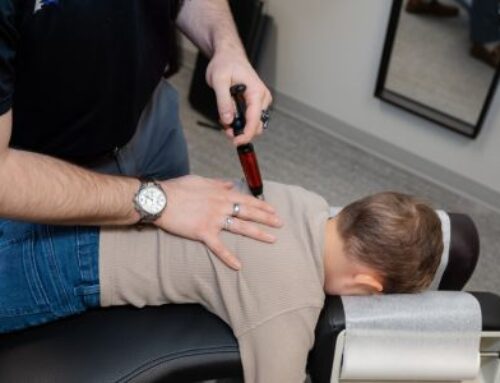Whenever I see a patient for jaw pain also known as TMJ (TemporoMandibular Joint) pain, I always ask them if they are prone to grinding and/or clenching. An estimated 60% of adults exhibit some sort of clenching, grinding or shifting of their jaw while sleeping. While clenching and grinding does not always result in jaw pain, most patients with jaw pain see an increase in pain with nighttime clenching and grinding.
Because these two aggravating factors occur at night, while we are asleep, many patients ask me what they can do to stop it. The reality, unfortunately, is that there really isn’t much you can do to stop yourself from subconsciously performing these actions. Especially when sleeping. That said, there is one very helpful thing you can do to mitigate the effects of clenching and grinding and that is to talk to your dentist about getting a mouthguard!
Most patients have either seen a mouth guard or wear one themselves already. To clarify, I’m not actually talking about your run-of-the-mill mouthguard. This is that thin plastic piece which fits snug around your teeth almost like a beefer retainer. These are not what I’m talking about. These “thinner” mouthguards are really just designed to accomplish superficial goals: That is to say that dentists create these mouthguards in order to keep your teeth aligned as well as prevent grinding from causing damage to your teeth.
That second part is key. These “thinner” pieces are designed to prevent grinding from causing damage to your teeth, NOT prevent grinding outright. Even the thicker mouthguards I’ve seen are still designed with these two goals in mind, albeit the thicker pieces last longer as they are harder to grind all the way through. Now don’t get me wrong, these mouthguards are useful, nobody wants misaligned or jagged teeth. However, there is another type of mouthguard that actually does address our two aggravating factors of jaw pain.
Enter the NTI-tss mouthguard. The Nociceptive Trigeminal Inhibition Tension Suppression System (NTI-tss) is a mouthguard that generally covers the front 3-4 teeth and features an elevated ridge. This elevated ridge means that as you close your mouth the mouthguard actually comes into contact with the opposing set of teeth in a way that prevents the rest of your teeth from making contact. Imagine it as a little spacer that fits between her front teeth that prevents you from closing your mouth all the way. This may sound odd to effectively leave the sides of your mouth open while you wear a mouthguard but this actually provides an important benefit.
By preventing the teeth running along the lateral portions of your mouth from making contact with one another, we accomplish two goals. One, the masseter and temporalis muscles which are responsible for clenching can no longer engage to their fullest extent. This is because the muscle requires the surface contact of your lateral teeth in order to activate. Go ahead, try and squeeze those clenching muscles along the side of your jaw and skull WITHOUT closing your mouth, it’s IMPOSSIBLE!
Additionally, Because the front teeth are the only teeth making contact, grinding can only occur along these teeth. And because you are unable to clench due to the lack of surface contact along the lateral teeth, the intensity at which you are able to grind is also greatly diminished. Think of trying to sand a wooden edge down while only barely applying any pressure between the sandpaper and wood. Less pressure means less friction. This means less clenching AND less grinding.
Now earlier I said that the NTI generally covers only the front 3-4 teeth. Traditionally, this has been true but given the potential as a choking hazard for such a small device, the NTI Plus is an available option which sees the NTI design combined with a more traditional mouthguard. This extended NTI has the benefit of the elevated ridge in the front as well as featuring extended wings that cover the lateral teeth as well. With this design the piece is large enough where choking is no longer a concern but still prevents surface contact along the lateral teeth.
Of course this is not a problemless solution. As with all medical devices there are situations in which the NTI may not be a good fit. For one, you do not want to get an NTI if you have weak or otherwise unstable teeth. Placing pressure along a few poor teeth rather than sharing the pressure across all teeth can be problematic. That said, I always suggest that my jaw pain patients speak with their Dentist about getting a mouthguard like the NTI. Growing up with chronic and intense jaw pain myself, wearing an NTI in conjunction with chiropractic care and soft tissue massage was instrumental in my getting to a point where my jaw pain no longer ruled my life.
Getting to the point where your jaw can learn to relax and break the habit of constant tension requires soft tissue massage, adjusting and of course rehab exercises! But if you are going to bed every night and re-exacerbating your symptoms with chronic clenching and grinding, it can be very difficult to get a grip on the problem. Creating sustainable health is not just about the treatment. It’s also about making the changes necessary to prevent the problem from coming back again!
So if you or someone you know is suffering from jaw pain, call and set up an appointment today. Our multi-faceted approach to relaxing, mobilizing and reconditioning the jaw comes on the back of years of experience in dealing with and finally overcoming chronic jaw pain. And while we’re at it make sure to talk to your Dentist about how NTI mouthguards can help you with nighttime clenching and grinding.





